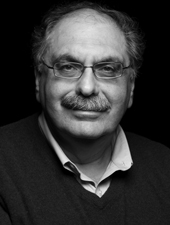Mendez-Ferrer, S., Michurina, T. V., Ferraro, F., Mazloom, A., MacArthur, B., Lira, S., Scadden, D. T., Ma'ayan, A., Enikolopov, G. N., Frenette, P. S. (November 2009) Coordinated Regulation of Hematopoietic and Mesenchymal Stem Cells in a Bone Marrow Niche. Blood, 114 (22). p. 3. ISSN 0006-4971
Abstract
Despite their therapeutic potential, mesenchymal stem cells (MSCs) remain poorly defined owing to their heterogeneity, the inability to assess in vivo self-renewal and the scarcity of markers allowing their identification, isolation and genetic manipulation. In the bone marrow (BM) of Nestin (Nes)-Gfp transgenic mice, CD31– CD45– GFP+ peri-vascular cells expressing endogenous nestin are associated with hematopoietic stem cells (HSCs) and innervated by fibers from the sympathetic nervous system (SNS). Flow cytometry sorting of BM CD45– Nes:GFP+ and CD45– Nes:GFP– cells has revealed that Nes:GFP+ cells, despite their rarity (4.0 ± 0.6% CD45– cells), contain all the colony-forming unit-fibroblastic (CFU-F) activity and have the exclusive capacity of forming self-renewing, multipotent clonal spheres that differentiate robustly along osteoblastic, chondrocytic and adipocytic lineages. To test in vivo self-renewal, single spheres derived from Nes-Gfp / Col2.3-Cre / R26R triple-transgenic animals were allowed to attach to phosphocalcic ceramic ossicles that were subcutaneously implanted into littermate mice that did not carry the transgenes. Histological analyses after 2 months revealed the presence of β-galactosidase+ osteoblasts (OBs) derived from Nes:GFP+ cells and not from 30,000 control CD45– Nes:GFP– cells. Hematopoietic areas were associated with Nes:GFP+ cells, that yielded per ossicle 310 ± 32 GFP+ secondary spheres (n=6), 38.6 ± 1.9% of which showed spontaneous multilineage differentiation into Col2.3+ OBs and Oil Red O+ adipocytes. Single secondary spheres subjected to a subsequent round of transplantation yielded after 8 months 8,557 ± 537 GFP+ spheres per ossicle (n = 7), which also generated Col2.3+ OBs, as a further proof of their self-renewal, osteoblastic differentiation potential and donor origin. Lineage-tracing studies in Nes-Cre / R26R mice have revealed the contribution of nestin-expressing cells in endochondral and membranous ossification. Administration of tamoxifen to adult Nes-CreERT2 mice bred to different reporter lines revealed that adult nestin-expressing BM cells could generate OBs, chondrocytes and osteocytes after 8-month chasing, suggesting an active role for adult nestin+ MSCs in physiological bone turnover. Genome-wide comparison analyses have shown that BM CD45– Nes:GFP+ cells are distinct from other stem cells but closest to in vitro expanded MSCs. Applying gene ontology analyses, metabolic and cell cycle genes were up- and down-regulated, respectively, in BM CD45– Nes:GFP+ cells. We have studied gene regulation, cell cycle and fate in response to granulocyte-colony stimulating factor (G-CSF), parathormone (PTH) and signals from the SNS, stimuli that regulate both hematopoietic and mesenchymal lineages in the BM. Cell cycle studies from FACS-sorted, flushed BM samples have confirmed that CD45– Nes:GFP+ cells are much more quiescent (90% G0/G1) than CD45– Nes:GFP– cells (58% G0/G1) but are selectively induced to proliferate after chemical sympathectomy (61% G0/G1) or PTH (70% G0/G1) administration in mice (n = 4–5). The inhibitory effects of the SNS and G-CSF (95% G0/G1) on BM CD45– Nes:GFP+ cells were not limited to cell cycle but also involved osteoblastic differentiation and expression of HSC maintenance genes. By contrast, in vivo or in vitro treatment with PTH selectively induced proliferation and osteoblastic differentiation of CD45– Nes:GFP+ cells, which express PTH receptor 1. We generated selective cell depletion models by intercrossing Nes-Cre and Nes-CreERT2 mice with a Cre-inducible diphtheria toxin receptor line (iDTR). In both models, HSC numbers decreased by ~ 50% in the BM and increased in the spleen, an effect directly caused by selective BM cell depletion, as per in vitro experiments. In the more specific Nes-CreERT2 model, this effect was specific for HSCs and not for more mature progenitors. Cell depletion in Nes-Cre / iDTR and Nes-CreERT2 / iDTR mice reduced homing of hematopoietic progenitors by 73 and 90%, respectively. Finally, combined two-photon and confocal microscopy of the calvarial BM has demonstrated that highly purified, labeled HSCs rapidly (≤ 2h) home near Nes:GFP+ cells. Thus, cytokines, hormones, and the SNS regulate both HSC maintenance and bone formation in the BM stem cell niche through direct control of nestin-expressing MSCs. These results uncover an unprecedented partnership between two distinct somatic stem cell types and argue for a unique peri-vascular niche in the BM formed by MSC-HSC pairs.
| Item Type: | Paper |
|---|---|
| Additional Information: | Meeting Abstract |
| Subjects: | Publication Type > Meeting Abstract therapies > stem cells |
| CSHL Authors: | |
| Communities: | CSHL labs > Enikopolov lab |
| Depositing User: | Matt Covey |
| Date: | 20 November 2009 |
| Date Deposited: | 21 Feb 2013 21:19 |
| Last Modified: | 13 Mar 2018 19:00 |
| URI: | https://repository.cshl.edu/id/eprint/27351 |
Actions (login required)
 |
Administrator's edit/view item |

